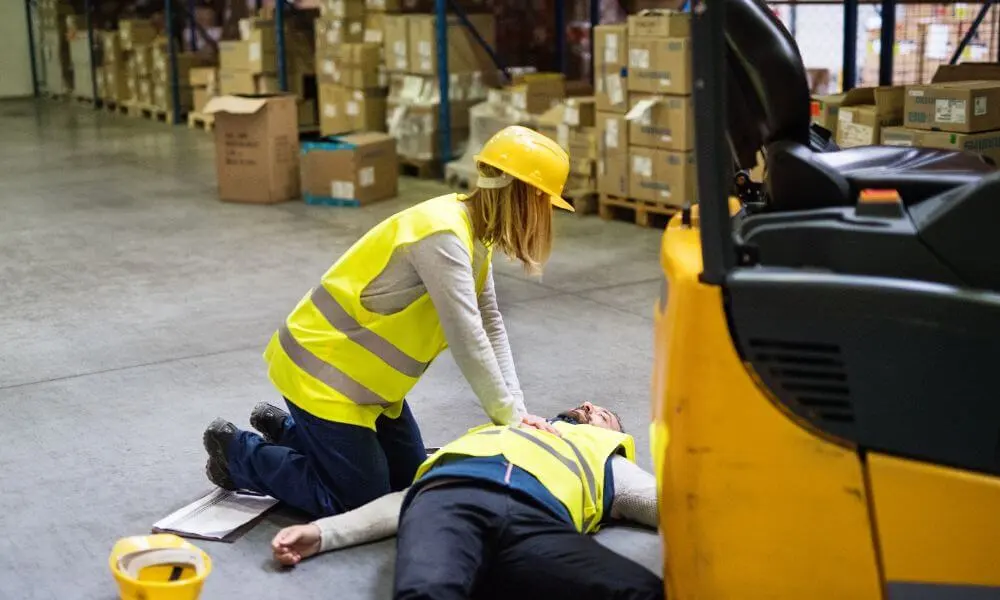Accidents incidents and near misses are all terms used to describe events that have the potential to cause harm or loss. Accidents are events that lead to actual injury or damage, while incidents refer to events that have the potential to cause harm or loss but do not result in any injury or damage. Near misses are events that have the potential to cause harm or loss but are avoided or prevented.
Accidents Incidents and Near Misses
The critical difference between accidents, incidents, and near misses is the outcome. Accidents result in actual injury or damage, incidents have the potential to cause harm or loss but do not result in any injury or damage, and near misses are avoided or prevented.
Accidents incidents and near misses are all categorized according to the event’s severity. Accidents are the most severe, followed by incidents, and near misses are the least severe. Accidents and incidents can be categorized as either minor or significant, depending on the event’s severity. Minor accidents and incidents are those that result in minor injury or damage, while substantial accidents and incidents are those that result in severe injury or damage.

It is essential to distinguish between accidents incidents and near misses to properly assess the risk of a given situation and take the necessary steps to prevent harm or loss. Understanding the differences between these three types of events makes it possible to identify potential risks and take action to reduce the risk of accidents, incidents, and near misses.
Causes of Accidents, Incidents, and Near Misses
Accidents incidents and near misses are all potential dangers in the workplace. While the terms are often used interchangeably, each carries a different meaning, and each can be caused by various factors. To prevent these types of occurrences, it is crucial to understand the causes of each.
Accidents are typically caused by factors such as unsafe working conditions, lack of training, and improper use of equipment. Hazardous working conditions include anything from a cluttered work area to inadequate lighting or ventilation. Lack of training can lead to workers needing to understand how to use tools and equipment or handle hazardous materials properly. Improper use of equipment can lead to accidents such as falls, slips, or other injuries.
Incidents can be caused by various factors, such as improper maintenance of equipment, inadequate safety protocols, or lack of supervision. Improper equipment maintenance can lead to malfunctions that can cause injury or damage. Inadequate safety protocols can lead to workers needing to understand how to perform their tasks safely. Lack of supervision can lead to workers not following safety protocols or taking unnecessary risks.

Near Misses are often caused by a combination of factors, such as a lack of safety protocols, training, and inadequate supervision. Lack of safety protocols can lead to workers needing to understand how to perform their tasks safely or not following safety protocols. Lack of training can lead to workers needing to know how to use tools and equipment properly or handle hazardous materials. Inadequate supervision can lead to workers failing to follow safety protocols or taking unnecessary risks.
Identifying and addressing potential causes of accidents incidents and near misses is essential for a safe and productive workplace. Employers should conduct regular safety audits to identify potential hazards and implement safety protocols to address them. Workers should be trained adequately on using tools and equipment safely, and supervisors should ensure that safety protocols are followed. By understanding the common causes of each type of occurrence and taking steps to address them, employers can provide a safe and productive workplace.
Examples of Accidents Incidents and Near Misses
Accidents: A car accident is a classic example of an accident. When two cars collide, the drivers are usually injured, and the vehicles are damaged. Other examples of accidents include slips and falls, medical malpractice, and fires.
Incidents: An incident is an event that could have resulted in an accident but didn’t. For example, if a driver is speeding and swerves to avoid hitting a pedestrian, but the pedestrian is unharmed, this is an incident. Other incidents include a malfunctioning machine, a near-miss with another vehicle, and a medical misdiagnosis.
Near Misses: A near miss is an event that could have resulted in an accident but was avoided due to a close call. For example, if a driver is speeding and swerves to avoid hitting a pedestrian, but the pedestrian is unharmed, this is a near miss. Other near misses include a malfunctioning machine that was shut off before it caused an accident, a near-miss with another vehicle, and a medical misdiagnosis caught in time.
Recognizing the Difference
Accidents incidents and near misses can be challenging to distinguish. However, there are a few key differences to look for. Accidents are events that have already resulted in harm or damage. Incidents could have resulted in injury or damage, but they didn’t. Near misses could have resulted in harm or damage but were avoided due to a close call.

By understanding the differences between accidents incidents and near misses, you can better identify and respond to each type of event. With the proper knowledge and preparation, you can help prevent accidents, incidents, and near misses from occurring in the future.
Preventing Accidents, Incidents, and Near Misses
The best way to protect your employees and your business from the dangers associated with accidents, incidents, and near misses is to prevent them from occurring in the first place. To do this, you need to look at preventative measures for each type of event.
Safety protocols are essential to prevent accidents, incidents, and near misses. Ensure all employees are aware of the safety protocols in place and are adequately trained on them. Safety protocols should cover the proper use of equipment, handling hazardous material safely, and any other safety measures necessary for the workplace.
It’s also essential to provide regular safety inspections and training. Inspections should be conducted regularly to ensure that all safety protocols are followed. Training should also be provided to all employees to ensure they know and can adequately follow the safety protocols.
Finally, it’s crucial to have a system for reporting accidents incidents and near misses. A plan will ensure that any incidents are correctly reported and investigated. This will help to prevent future incidents from occurring and will help to ensure that all safety protocols are being followed.
Preventing accidents, incidents, and near misses is essential for any workplace. By taking the necessary steps to ensure that safety protocols are in place and that employees are adequately trained and aware of them, you can help to ensure that your workplace is safe and secure.
Reporting Accidents, Incidents, and Near Misses
Reporting accidents incidents or near misses is essential for workplace safety. It is important to understand the differences between each type of event and the importance of reporting each one. In this chapter, we will review the reporting process and procedures and discuss the benefits of reporting.
Accidents incidents and near misses are all events that can occur in the workplace, and each one must be reported to ensure the safety of all employees. An accident is an unplanned event that results in injury or property damage. An incident is an event that could have resulted in injury or property damage but did not. A near miss is an event where the potential for injury or property damage was present but did not occur.

The reporting process for each type of event is similar. First, the employee must report the event to their supervisor or safety representative. The supervisor or safety representative will investigate the incident and document the findings. Depending on the severity of the incident, the supervisor or safety representative may need to report the incident to the appropriate authorities.
Reporting each type of event has many benefits. It allows employers to identify and address potential safety risks before they become a problem. It also allows employers to investigate and document the event’s cause to prevent similar occurrences. Finally, reporting incidents can help employers maintain a safe working environment for all employees.
In conclusion, it is vital to understand the differences between accidents incidents and near misses and to report each type of event to ensure workplace safety. Reporting every kind of event can help employers identify and address potential safety risks, investigate and document the cause of the event, and maintain a safe working environment for all employees.
Conclusion: Quick Reporting is Must
Accidents incidents and near misses are severe workplace occurrences with wide-reaching implications. It is essential to understand their differences, their causes, and how to prevent them from occurring. While it is impossible to avoid all accidents, incidents, and near misses from happening, taking steps to identify potential risks and taking preventive action can significantly reduce the chances of them occurring. Additionally, it is essential to have a reporting system in place so that any workplace occurrences can be quickly and accurately reported. By taking the necessary steps to understand and prevent workplace accidents, incidents, and near misses, companies can create a safer work environment for their employees. You can find very good definitions of the above-discussed terms here too.
